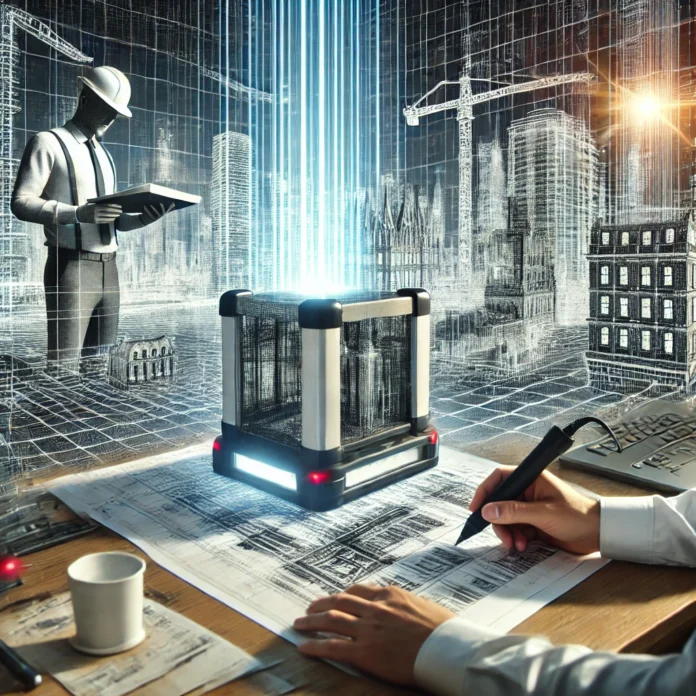1. Introduction
In the modern AEC (Architecture, Engineering, and Construction) industry, precision and efficiency are critical to successful project execution. Scan to BIM services have revolutionized how architects, engineers, and contractors approach building design, renovation, and facility management. By converting laser-scanned point cloud data into accurate Building Information Models (BIM), professionals can work with a highly detailed, digital representation of existing structures.
This blog explores Scan to BIM, how it works, its benefits, real-world applications, and why it is rapidly becoming the industry standard for construction and renovation projects.
2. What is Scan to BIM?
Scan to BIM refers to the process of capturing real-world building data using 3D laser scanning technology and transforming it into a detailed BIM model. This digital model includes geometrical and spatial details, making it invaluable for planning, renovation, and facility management.
Evolution from Traditional Surveying
Historically, surveying was done manually using tape measures, total stations, and photogrammetry, which often led to errors and inconsistencies. With 3D laser scanning, professionals can now obtain millions of data points within minutes, ensuring unmatched precision and accuracy.
How Scan to BIM Supports Digital Transformation
With the rise of digital twins, smart cities, and AI-driven construction, Scan to BIM plays a critical role in enabling seamless data integration, predictive analysis, and real-time collaboration among project stakeholders.
3. How Does Scan to BIM Work?
The Scan to BIM workflow involves three primary stages:
1. Data Acquisition (3D Scanning Process)
- Laser scanners (such as LiDAR or terrestrial laser scanning) capture point cloud data of the building.
- High-resolution scans are taken from multiple angles to create a comprehensive 3D dataset.
- Popular scanning technologies: LiDAR, photogrammetry, drone-based scanning.
2. Data Processing & Registration
- The scanned data is compiled and aligned into a cohesive point cloud model.
- Noise and errors are filtered out to enhance accuracy.
- The processed data is then imported into BIM software such as Autodesk Revit, ArchiCAD, or Navisworks.
3. BIM Model Creation
- The point cloud data is converted into a 3D BIM model with architectural, structural, and MEP (Mechanical, Electrical, and Plumbing) elements.
- The final model includes accurate as-built documentation, which helps in design, renovation, and facility management.
4. Benefits of Scan to BIM Services
The adoption of Scan to BIM services is transforming the AEC industry by improving efficiency, accuracy, and collaboration. Here are some key benefits:
1. High Accuracy & Reduced Errors
Traditional surveying methods often result in measurement inaccuracies, leading to costly rework. Scan to BIM ensures precise measurements, reducing human error and allowing for exact as-built documentation.
2. Cost & Time Efficiency
- Eliminates the need for manual measurements, saving time.
- Reduces construction rework caused by inaccurate data.
- Speeds up design and renovation processes by providing accurate existing conditions models.
3. Improved Collaboration & Project Management
- Scan to BIM integrates seamlessly with BIM platforms like Autodesk Revit and Navisworks, enabling real-time data sharing.
- Enhances communication between architects, engineers, and contractors, reducing project conflicts.
4. Supports Sustainable Construction Practices
- Minimizes material waste by optimizing design accuracy.
- Facilitates better energy modeling for green building initiatives.
5. Applications of Scan to BIM in Different Industries
Scan to BIM is widely used across various sectors, improving efficiency and accuracy in design, construction, and facility management.
1. Architecture & Design
- Helps in creating detailed as-built models for renovations or historical building restorations.
- Enables architects to visualize existing structures accurately.
2. Civil Engineering & Infrastructure
- Supports infrastructure projects like bridges, roads, and tunnels by capturing detailed site conditions.
- Ensures better planning and clash detection in large-scale infrastructure developments.
3. Historic Building Restoration
- Preserves cultural heritage by digitally documenting historical structures.
- Allows for detailed reconstruction without altering the original architecture.
4. Facility Management & Renovation
- Simplifies building maintenance by providing accurate as-built data.
- Helps facility managers plan efficient space utilization and energy management.
6. Scan to BIM vs. Traditional Surveying
Many professionals still rely on traditional surveying, but Scan to BIM offers significant advantages:
| Feature | Scan to BIM | Traditional Surveying |
|---|---|---|
| Accuracy | High (within mm precision) | Moderate (manual errors possible) |
| Time Required | Quick (minutes to hours) | Lengthy (days to weeks) |
| Data Format | Digital 3D BIM model | 2D drawings and manual records |
| Collaboration | Seamless digital sharing | Limited data integration |
| Cost Efficiency | Reduces rework costs | Higher cost due to manual corrections |
With Scan to BIM, projects move faster, errors are minimized, and digital collaboration improves efficiency.
7. Challenges and Limitations of Scan to BIM
While Scan to BIM services offer numerous benefits, there are some challenges and limitations to consider.
1. Data Processing Complexity
- Large Point Cloud Data: Processing high-resolution point cloud files requires powerful computing resources.
- File Compatibility Issues: Some BIM software may not support certain scan file formats, requiring additional conversion steps.
2. High Initial Investment
- Expensive Scanning Equipment: LiDAR and laser scanners can be costly for small businesses.
- Software Licensing Costs: BIM software like Autodesk Revit, Navisworks, and Recap come with substantial licensing fees.
3. Requires Skilled Professionals
- Not all professionals are trained in handling point cloud data and BIM modeling.
- Requires expertise in data registration, noise reduction, and model optimization.
Despite these challenges, the long-term ROI of Scan to BIM outweighs the initial investment, making it a valuable asset for construction and facility management.
8. Best Practices for Implementing Scan to BIM
To maximize the benefits of Scan to BIM services, consider the following best practices:
1. Choose the Right Scanning Technology
- LiDAR for high-precision indoor & outdoor scans.
- Terrestrial laser scanners for detailed structural modeling.
- Drone-based photogrammetry for large-scale projects.
2. Work with Experienced BIM Professionals
- Hire professionals trained in BIM modeling and point cloud processing.
- Ensure collaboration between architects, engineers, and surveyors for accurate results.
3. Ensure Model Accuracy and Data Quality
- Perform multiple scans from different angles to eliminate blind spots.
- Regularly check BIM models for clash detection and alignment with project specifications.
9. Future Trends in Scan to BIM Technology
The Scan to BIM industry is evolving rapidly, driven by advancements in AI, automation, and cloud computing.
1. AI and Automation in BIM Modeling
- AI-powered tools are being developed to automatically classify and convert point cloud data into BIM models.
- Reduces manual effort and increases efficiency.
2. Cloud-Based Collaboration Tools
- Scan data and BIM models are increasingly stored in cloud platforms like Autodesk BIM 360.
- Enables real-time collaboration across teams in different locations.
3. Integration with Digital Twins and IoT
- Scan to BIM is now being used in smart cities and digital twin technology.
- IoT sensors integrated with BIM models allow for real-time monitoring of building performance.
With these trends, Scan to BIM services are set to become even more efficient, cost-effective, and widely adopted in the AEC industry.
10. Choosing the Right Scan to BIM Service Provider
Selecting the right Scan to BIM service provider is crucial for ensuring high-quality results and a smooth project workflow. Here are some key factors to consider:
1. Experience & Expertise
- Look for providers with a proven track record in the AEC industry.
- Check their expertise in handling different types of structures (residential, commercial, infrastructure, historical buildings, etc.).
2. Technology & Software Used
- Ensure they use high-precision 3D laser scanners like Leica, FARO, or Trimble.
- Verify compatibility with Autodesk Revit, Navisworks, or other BIM platforms.
3. Portfolio & Case Studies
- Request previous project samples to assess their quality and accuracy.
- Look for case studies showcasing successful Scan to BIM implementations.
4. Turnaround Time & Cost Efficiency
- Ask about project timelines and how quickly they can deliver BIM models.
- Compare pricing models to ensure you’re getting the best value for your budget.
5. Client Testimonials & Reviews
- Check online reviews and client feedback to gauge their reputation and reliability.
- Look for companies that offer excellent customer support and clear communication.
By choosing the right Scan to BIM service provider, you can ensure a successful, efficient, and error-free project.
11. Case Studies and Success Stories
Case Study 1: Historical Building Restoration Using Scan to BIM
A heritage conservation team used 3D laser scanning to document a 200-year-old church.
- Challenges: The structure had delicate details that required high-precision modeling.
- Solution: Scan to BIM helped create an as-built digital twin, aiding in restoration without altering original architecture.
- Result: The project was completed 30% faster than using traditional methods.
Case Study 2: Commercial Building Renovation
A property developer needed to renovate a 40-story commercial building while ensuring minimal downtime.
- Challenges: Traditional surveys were time-consuming and prone to errors.
- Solution: A laser scan was conducted in less than 48 hours, generating an accurate BIM model for design updates.
- Result: The project stayed within budget and was completed 20% ahead of schedule.
Case Study 3: Infrastructure Upgrade & Clash Detection
A city planning team used Scan to BIM to assess underground utilities before launching a new metro expansion.
- Challenges: Complex site conditions made traditional surveys impractical.
- Solution: LiDAR scanning provided a detailed subsurface model, detecting potential clashes before construction.
- Result: The team avoided expensive redesigns and delays, saving millions in costs.
These case studies highlight how Scan to BIM improves accuracy, efficiency, and project success.
12. FAQs About Scan to BIM
1. How is Scan to BIM different from traditional BIM modeling?
Traditional BIM is created from design data, while Scan to BIM converts real-world structures into digital models using 3D scanning technology.
2. What types of scanners are used for Scan to BIM?
Common scanners include:
- LiDAR (Light Detection and Ranging)
- Terrestrial laser scanners (TLS)
- Drone-based photogrammetry
3. What software is best for processing Scan to BIM data?
Popular software includes:
- Autodesk Revit (for BIM modeling)
- Autodesk Recap (for point cloud processing)
- Navisworks (for clash detection and project coordination)
4. How long does the Scan to BIM process take?
- Small projects (residential homes): A few days
- Large commercial buildings: 1-2 weeks
- Complex infrastructure projects: Several weeks, depending on data processing needs
5. What industries benefit the most from Scan to BIM?
- Architecture & construction (renovations, as-built documentation)
- Civil engineering (bridges, tunnels, metro systems)
- Heritage preservation (historical building restoration)
- Facility management (maintenance and energy optimization)
By answering these common questions, we can help professionals better understand and implement Scan to BIM solutions.
13. Conclusion
Scan to BIM services have revolutionized the AEC industry by offering precise, data-driven solutions for construction, renovation, and facility management. By leveraging advanced 3D scanning technologies, professionals can:
✅ Improve accuracy and reduce rework
✅ Enhance collaboration with real-time digital models
✅ Optimize costs and increase project efficiency
With growing trends in AI automation, digital twins, and cloud-based BIM, the future of Scan to BIM looks incredibly promising. Now is the time for businesses to adopt this cutting-edge technology and stay ahead of the competition.
Learn about How Do Construction Site Security Services Protect Assets?































